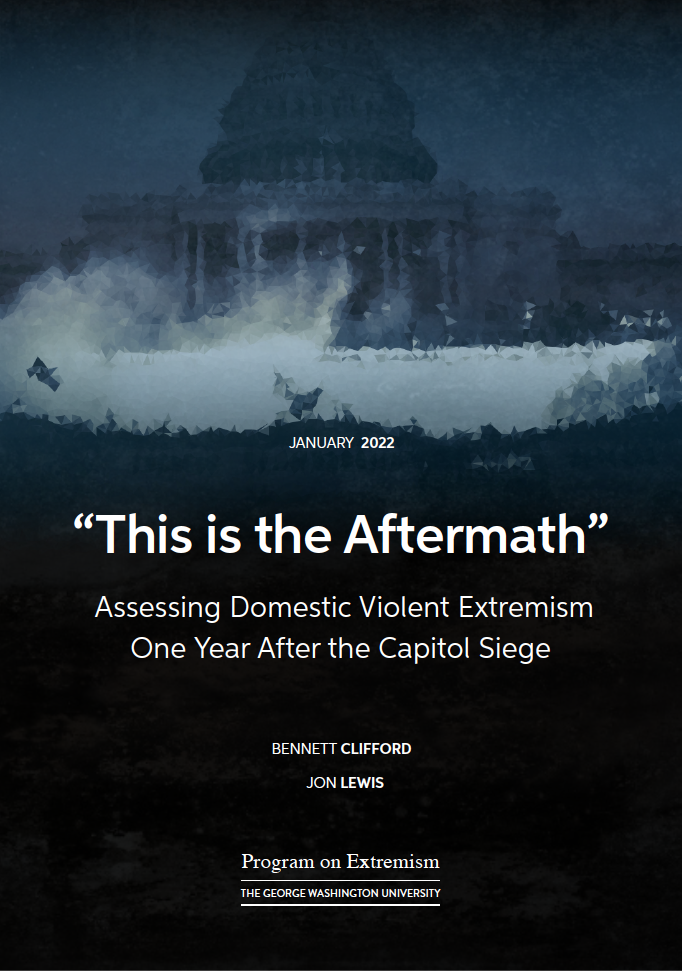On January 6, 2021, a mob composed of activists, unaffiliated sympathizers, and hardened extremists violently entered the United States Capitol, destroying property, assaulting law enforcement, and attempting to disrupt the American electoral process. During the siege, as it has come to be known, several thousand people are believed to have unlawfully breached the Capitol. The violence that day left five dead and more than a hundred injured.
The Capitol Siege was a watershed moment for domestic violent extremism in the United States. In its immediate aftermath, the Department of Justice and the Federal Bureau of Investigation launched a nationwide investigation into the alleged perpetrators of the violence. It quickly became the largest investigation of its type in the Bureau’s history, heralding investigations in nearly all 50 states and 704 criminal charges to date (as of January 1, 2022). The breadth of the federal investigation has resulted in an unprecedented pace of prosecutorial activity, with nearly two criminal charges released per day on average during the first three months after the Capitol Siege. Today, a year after January 6, 2021, new charges are still being released every week, and the operational tempo for the DOJ and FBI has not significantly slowed.
The events of that day also led the U.S. government to redesign its approach to counterterrorism, largely reorienting its focus from international to domestic extremism. At the same time, January 6, 2021, was not only a turning point for counterterrorism authorities but has numerous ramifications for various American domestic violent extremist groups and their efforts to recruit and plan activities while avoiding law enforcement scrutiny.
On the one-year anniversary of January 6, 2021, this report takes stock of the Capitol Siege’s impacts on domestic violent extremism in America, and the U.S. federal government’s efforts to respond to the threat over the past year. This research is based on the Program on Extremism’s Capitol Siege Database, a collection of over 20,000 pages of court documents from cases of individuals who have been federally charged for their participation in the Capitol Siege, as well as Freedom of Information Act (FOIA) requests, interviews with U.S. government officials and defense attorneys, media reports, and other open-source information.
The report’s main findings are as follows:
- In the year since the Capitol Siege, federal authorities have arrested 704 people for their alleged roles in breaching the Capitol. The backgrounds and motivations of individuals in this cohort remain demographically, geographically, and ideologically diverse.
- Existing evidence shows a limited correlation between an individual’s planning and coordination with domestic violent extremist groups prior to January 6th and their alleged participation in violent activities on January 6th. Examining the “spontaneous clusters”—individual siege participants who coordinated with others during the breach of the Capitol and jointly conducted violence—is vitally important to understand the nature of the violence at the Capitol and the potential for similar events in the future.
- Federal prosecutors allege that two domestic violent extremist networks were most responsible for mobilizing their followers to the Capitol on January 6th: the Oath Keepers and the Proud Boys. These groups have faced the bulk of the federal law enforcement pressure in the year following the Siege.
- The difference between the Oath Keepers’ and Proud Boys’ success in adapting to increased pressure and continuing their activities during the past year may be tied to the degree of decentralization in their leadership. The autonomy of local and regional Proud Boys chapters from their national leadership allowed them greater freedom to plan violent activities throughout 2021, even when major figures connected to the group were subject to significant federal investigations.
- Since January 2021, the U.S. government has made massive changes to its domestic counterterrorism architecture at the strategic, operational, and tactical levels. In 2021, each major agency tasked with counterterrorism has adopted new policies and guidelines to address domestic violent extremism, in response to a first-of-its-kind push from the White House to develop a national strategy to counter domestic terrorism.
- Countering domestic violent extremist groups after the Capitol Siege will require continued innovations in categorizing and analyzing groups and actors, as well as coordinating information sharing between federal, state, local, and non-governmental authorities.


